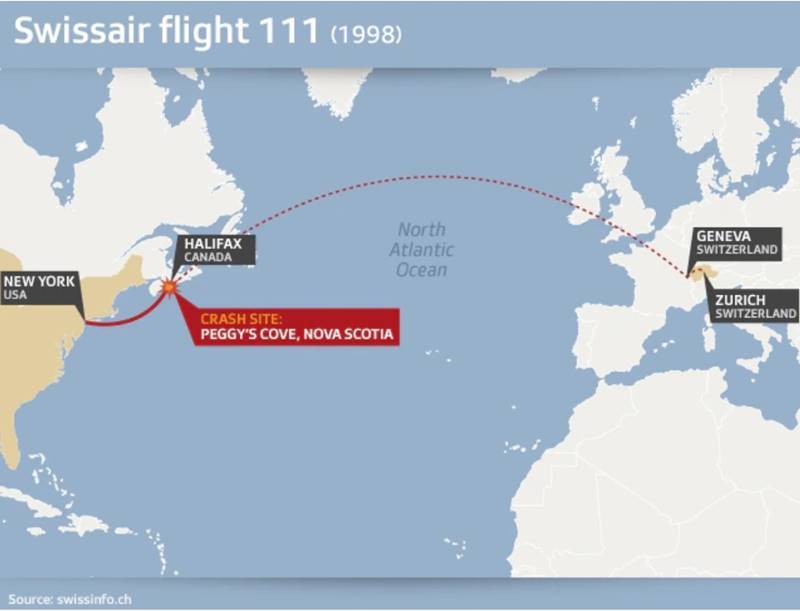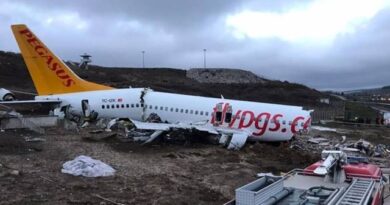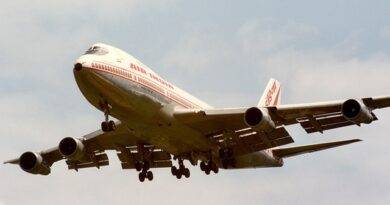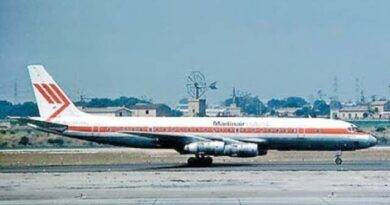Swissair Flight 111: The First and Deadliest Aviation Accident in Swiss History
When thinking of commercial airplane accidents and crashes, one of the deadliest and most dangerous conditions comes to mind: flying over international waters. Don’t get us wrong, hundreds of commercial flights take place flying over international waters every day safely, but if you think of it deeply, you realize that if the plane is near a piece of land which it can carry out an emergency landing on, the chances of the crew and the passengers surviving in case of an inconvenience or error is a lot higher compared to when flying over international waters. And not only does flying over international waters have a higher risk of a fatal accident when something goes wrong, but it is also a relatively more difficult process to investigate crashes and accidents that end up in waters.
Up to this day, about 30 accidents on commercial flights have occurred over international waters, which is 22 kilometers/14 miles off the coast of any piece of land. While most of these crashes caused the death of hundreds, there also have been people that were able to survive such an event.
In this blog post, we will look into one of these 30 accidents: Swissair Flight 111. Not only is Swissair Flight 111 the first commercial flight crash in Swiss aviation history, but it is also the deadliest one. Further in this post, we will look into the causes of this accident, as well as what happened during and afterwards the event.
The Day of Flight, September 2 1998
Swissair flight 111 was a regularly scheduled flight from New York City to Geneva. Because many of the passengers were UN employees traveling back to the organization’s headquarters, it was known as the United Nations airbus. The three-engine MD-11 aircraft took off from John F. Kennedy International Airport at 8:17 PM. There were 215 passengers and 14 crew members on board.
A weird scent was noticed in the cockpit less than an hour after the takeoff, and four minutes later smoke formed before dissipating. Although there was no imminent threat, the Pan Pan Pan (“The radiotelephony message PAN-PAN is the international standard urgency signal that someone aboard a boat, ship, aircraft, or other vehicle uses to declare that they have a situation that is urgent, but for the time being, does not pose an immediate danger to anyone’s life or to the vessel itself.” – Wikipedia) signal from the pilots indicated that there was an issue with the aircraft. They were not aware of the quickly spreading fire in the ceiling at the time; instead, they thought there was a problem with the air conditioning system. The captain asked for a detour to the 269-mile-away Boston Logan International Airport (BOS) in Massachusetts. The aircraft was instructed by Moncton ATC to divert to Halifax Stanfield International Airport (YHZ) instead of Boston since it was just 66 miles distant.
As Halifax Airport ATC was in charge of traffic entering and leaving Halifax International Airport, they took over control of the flight from Moncton ATC at 10:18 PM. The crew asked for a longer flying distance when the aircraft was just 30 miles from Halifax so that it could safely descend from its 21,000-foot altitude. To lighten the aircraft for landing, the pilots then requested authorization to dump gasoline. Halifax ATC instructed the aircraft to fly south over St. Margarets Bay so that the fuel could be safely discharged.
The pilots changed their direction in order to dump gasoline at around 10:21 PM. Three minutes later, when the plane’s different systems started to malfunction and the cockpit started to fill with smoke, they declared an emergency. Air traffic controllers lost touch shortly after that. At around 10:31 PM, the plane crashed into the Atlantic Ocean at 345 mph/555 kmh, allegedly almost upside down, and broke into hundreds of parts on impact.
Private fishing boats from Peggy’s Cove and Bayswater were the first to arrive on the scene. A Canadian Coast Guard ship and a Sea King aircraft from the Canadian Forces Base Shearwater in Nova Scotia shortly followed. It became clear right once that none of the 215 passengers or the 14 crew members had survived.

source: swissinfo.ch
Swissair Flight 111 – Investigation
Within ten weeks after the disaster, the majority of the victims were positively identified by RCMP medical examiners. Only one body was visible by sight due to the severe collision forces. In what has been referred to as “the largest DNA identification study ever performed in Canada,” DNA profiling was used to identify almost 100 remains. In order to get medical and dental histories, the RCMP got in touch with the victims’ families. Additionally, blood samples were required for genetic matching in the DNA identification of the victims. Due to the abundance of ante-mortem (before death) dental X-rays that were accessible to the examiners, some 90 remains were identified by the medical examiners using dental records by the end of October 1998.
The Canadian Transportation Safety Board (TSB) carried out an investigation to identify the cause of the accident with the help of NTSB, FAA, Swissair and Boeing. It was declared in 2003 that the combustible insulation above the cockpit was ignited by improper wiring, which caused the disaster. The officials came to the conclusion that the fire began in the cockpit’s top right side. The fire swiftly spread, deteriorated the cockpit environment and aircraft systems, and finally lost control of the aircraft. In the past, the TSB had suggested tighter regulations for electrical wiring and combustible materials . If the suggestion was accepted and put into application early enough, maybe the unfortunate event that took the lives of 219 people wouldn’t have occurred. Although the final study could not specify which area of the electrical wiring was at fault, it was thought that a recently installed entertainment system contributed to the incident. The TSB found that the jet would not have been able to reach Halifax even if it had not diverted to dump fuel, and the crew was found to be innocent of any misconduct.
Sources
https://en.wikipedia.org/wiki/Swissair_Flight_111
https://www.britannica.com/event/Swissair-flight-111
https://simpleflying.com/swissair-flight-111-crash-aniversary/
https://www.tsb.gc.ca/eng/medias-media/fiches-facts/a98h0003/sum_a98h0003.html


